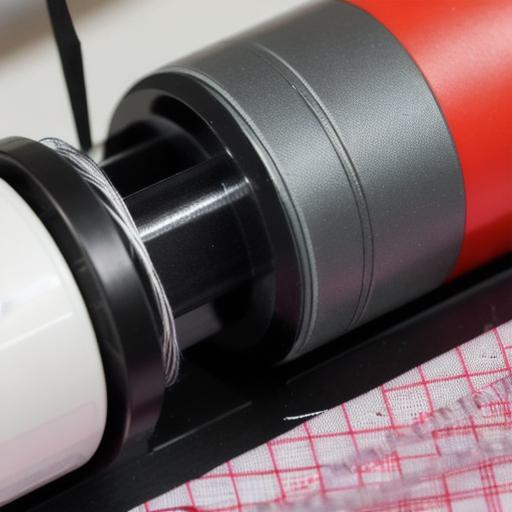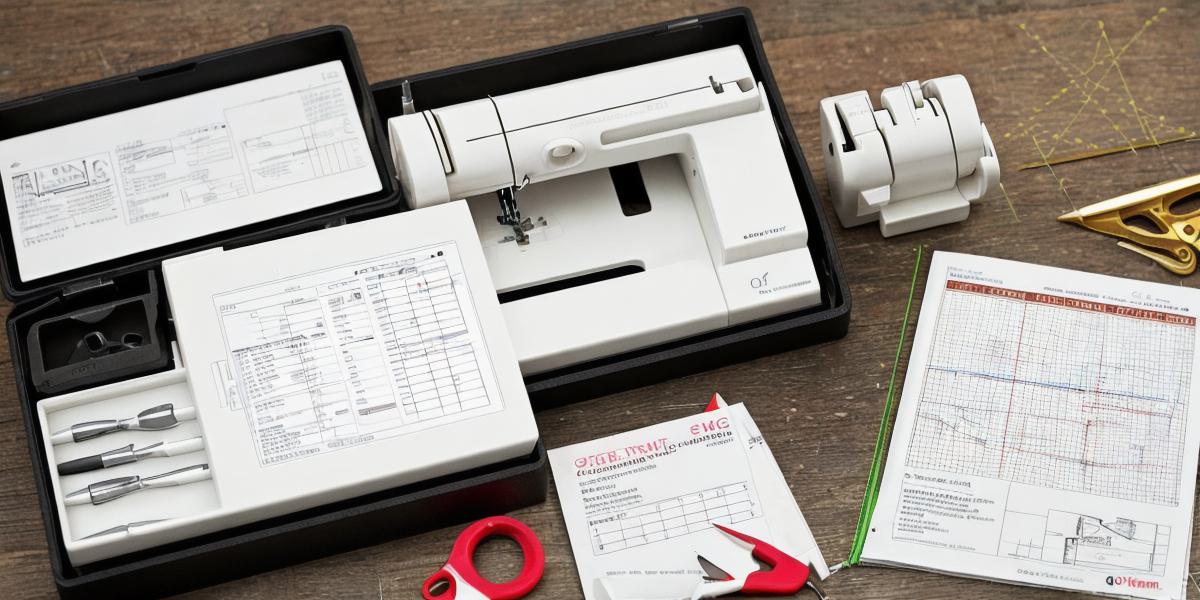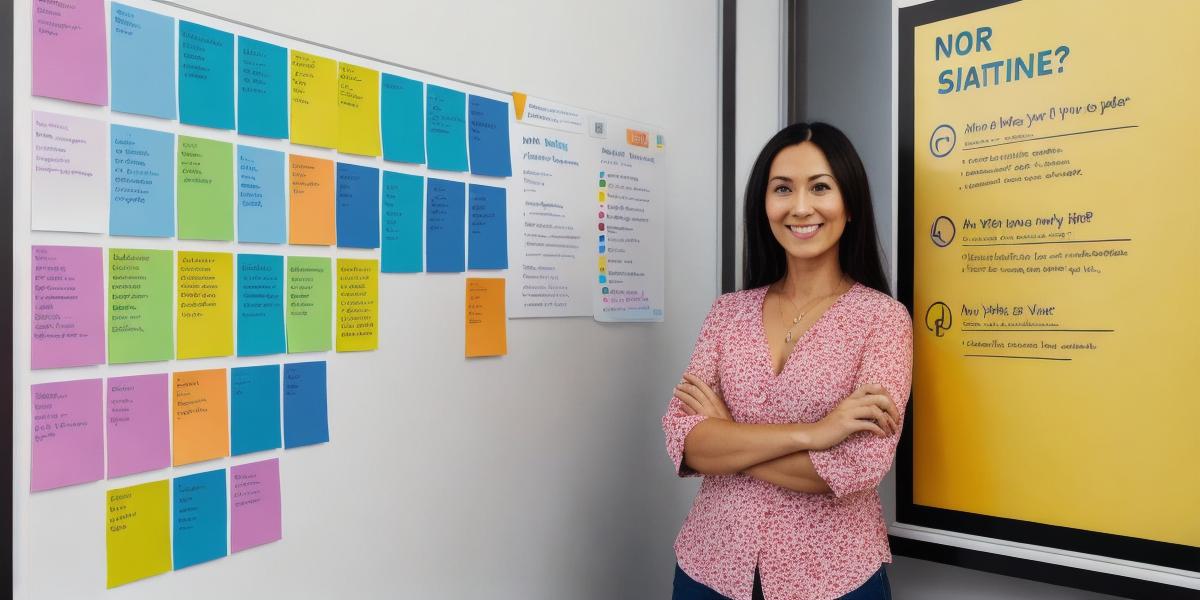Sewing is a popular hobby and a useful skill that has been practiced for centuries. Whether you’re a beginner or an experienced sewer, having the right tools can make all the difference in the success of your project. In this article, we will explore some of the best marking tools for sewing projects that will help you achieve precise and accurate results.
Marking Tools: An Essential Component of Sewing Projects
Marking tools are essential components of sewing projects because they allow you to accurately measure and mark your fabric before you begin sewing. These tools can be used to mark lines, shapes, and patterns on your fabric, ensuring that your stitches are evenly spaced and aligned. There are several types of marking tools available, including:
- Fabric Markers
- Pencil
- Tailor’s Chalk
- Scissors
- Ruler
- Rotary Cutters
- Project Marking Tools
Choosing the Right Marking Tool for Your Sewing Project
When choosing a marking tool, it’s important to consider the type of fabric you will be working with, the size and complexity of your project, and your personal preferences. Here are some tips to help you choose the right marking tool:
- Fabric Markers: These are the most commonly used marking tools in sewing. They come in various colors and can be used on all types of fabric. However, they may not be suitable for dark fabrics or delicate fabrics that might be damaged by the ink.
- Pencil: A pencil is a versatile marking tool that can be used on all types of fabric. It’s easy to erase mistakes and can be adjusted to make fine lines. However, it may not be suitable for dark fabrics or delicate fabrics.
- Tailor’s Chalk: This is a water-soluble marking tool that is perfect for marking temporary lines on fabric. It’s easy to apply and remove, but it may not show up well on dark fabrics.
- Scissors: These are useful for cutting fabric, but they can also be used as a marking tool by using the scissor blade to create lines or shapes on the fabric. However, they may not be suitable for delicate fabrics that might be damaged by the scissors.
- Ruler: This is an essential tool for measuring fabric and ensuring that your stitches are evenly spaced. It’s also useful for marking lines and shapes on fabric.
- Rotary Cutters: These are great for cutting large pieces of fabric quickly and accurately. They can also be used as a marking tool by using the blade to create lines or shapes on the fabric. However, they may not be suitable for delicate fabrics that might be damaged by the blade.
- Project Marking Tools: These are specialized marking tools that are designed specifically for sewing projects. They can be used to mark lines, shapes, and patterns on your fabric with precision and accuracy. Some examples include disappearing ink markers, chalk pencils, and stencil pens.
Best Practices for Using Marking Tools in Sewing Projects
When using marking tools in sewing projects, it’s important to follow best practices to ensure accurate and precise results. Here are some tips:
- Always test your marking tool on a scrap piece of fabric before you start your project to make sure that it will work well with the type of fabric you are using.
- Use a light touch when applying marks with a pencil or chalk marker, as too much pressure can cause the ink to smudge or bleed through the fabric.
- Use disappearing ink markers or chalk pencils for temporary marks, as they are easy to erase and will not damage your fabric.
- Use rotary cutters with care, as overuse or too much pressure can damage the blade and affect the accuracy of your cuts.
- Always use scissors carefully when cutting fabric to avoid damaging the threads or creating frayed edges.
- When measuring fabric with a ruler, make sure that you are using the correct side of the ruler and that you are applying even pressure to ensure accurate measurements.
- Use project marking tools specifically designed for sewing projects, as they will provide more precise and accurate results than general-purpose marking tools.

Case Studies: Real-Life Examples of How Marking Tools Have Helped Sewers Succeed
To illustrate the importance of marking tools in sewing projects, let’s take a look at some real-life examples:
- Sarah is a beginner sewer who has just started making her own dresses. She used to rely on handwritten notes and estimates to mark her fabric, but this often resulted in uneven stitching and mistakes. After researching different marking tools, she decided to try using disappearing ink markers. These allowed her to make precise marks on her fabric without damaging it, and she was able to create a beautiful dress that fit perfectly.
- John is an experienced sewer who has been making quilts for years. He used to use a pencil to mark his fabric, but this often resulted in smudging or bleeding through the fabric. After trying different types of pencils and chalk markers, he discovered that using a tailor’s chalk marker worked best for him. This allowed him to make light, precise marks on his fabric that were easy to erase if needed.
- Lisa is a professional seamstress who has been working in the fashion industry for over 10 years. She relies heavily on project marking tools to ensure that her clients’ garments are made to the highest standards. She uses disappearing ink markers, chalk pencils, and stencil pens to create precise lines, shapes, and patterns on her fabric. These tools have helped her save time and produce more accurate results, which has increased her productivity and client satisfaction.
FAQs: Common Questions About Marking Tools in Sewing Projects
Here are some common questions about marking tools in sewing projects:
1. Can I use a regular pen to mark my fabric?
While it’s possible to use a regular pen to mark your fabric, it may not be suitable for all types of fabrics and may cause damage or bleeding through the fabric if too much pressure is applied. It’s best to use specialized marking tools designed specifically for sewing projects.
2. Do I need to buy a different marking tool for every type of fabric?
No, you don’t necessarily need to buy a different marking tool for every type of fabric. However, it’s important to choose a marking tool that is suitable for the type of fabric you will be working with and the complexity of your project. For example, if you are working with delicate fabrics or dark fabrics, you may want to use a lighter touch or a specialized marking tool that won’t damage the fabric.
3. Can I erase marks made with a tailor’s chalk marker?
Yes, tailor’s chalk markers can be easily erased with a damp cloth or sponge. However, it’s important to note that some fabrics may absorb the chalk marker and cause staining if not properly removed. It’s always best to test your marking tool on a scrap piece of fabric before using it on your project.
4. How do I prevent my rotary cutter from damaging the blade or affecting the accuracy of my cuts?
To prevent your rotary cutter from damaging the blade or affecting the accuracy of your cuts, make sure to use it carefully and follow best practices. This includes using a light touch, not overusing the blade, and replacing the blade when necessary. It’s also important to choose the correct type of blade for the type of fabric you will be cutting.
5. Can I use marking tools on my sewing machine?
Marking tools can be used with your sewing machine to make precise stitching along marked lines. Some sewing machines even have built-in marking guides that allow you to easily align your fabric and create accurate stitching. However, it’s important to follow the manufacturer’s instructions for using your sewing machine with marking tools to ensure that they don’t cause any damage or affect the accuracy of your stitching.
Conclusion: The Importance of Marking Tools in Sewing Projects

Marking tools are essential in sewing projects, as they allow you to create precise and accurate results with minimal effort. Whether you are a beginner sewer or a professional seamstress, there is always room for improvement when it comes to using marking tools in your projects. By following best practices and choosing the right type of marking tool for your project, you can save time, increase productivity, and produce high-quality garments that meet the needs of your clients or customers.




